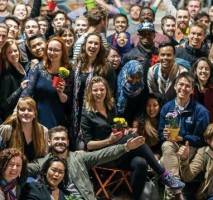June 1, 2016
Lifts are a waste of both time and energy, claims report 0
 As we’ve suggested before, lifts tell us an awful lot about how we work. Now, according to a new study from building consultancy SVM Associates and wellness firm Stepjockey it appears that they are a waste of both time and energy. According to the research carried out by SVM director John Newbold, employees typically waste fifteen minutes a day waiting around for them in lobbies and the lifts themselves consume more energy than firms suppose. The problem of wasted time is exacerbated by the growing adoption of flexible, collaborative working models which mean people move around offices more. According to the study the solution if you want to save time and get some exercise is to take the stairs, especially for trips of fewer than seven storeys. Lifts also typically consume up to 8 percent of the energy in office buildings, using over a third (35 percent) more power than claimed by their manufacturers according to the findings of Smarter Buildings: Real-world energy use of lifts/elevators in contemporary office buildings.
As we’ve suggested before, lifts tell us an awful lot about how we work. Now, according to a new study from building consultancy SVM Associates and wellness firm Stepjockey it appears that they are a waste of both time and energy. According to the research carried out by SVM director John Newbold, employees typically waste fifteen minutes a day waiting around for them in lobbies and the lifts themselves consume more energy than firms suppose. The problem of wasted time is exacerbated by the growing adoption of flexible, collaborative working models which mean people move around offices more. According to the study the solution if you want to save time and get some exercise is to take the stairs, especially for trips of fewer than seven storeys. Lifts also typically consume up to 8 percent of the energy in office buildings, using over a third (35 percent) more power than claimed by their manufacturers according to the findings of Smarter Buildings: Real-world energy use of lifts/elevators in contemporary office buildings.

































May 30, 2016
Why the greatest places to work are also safe by design 0
by Justin O'Sullivan • Comment, Facilities management, Wellbeing, Workplace design
(more…)